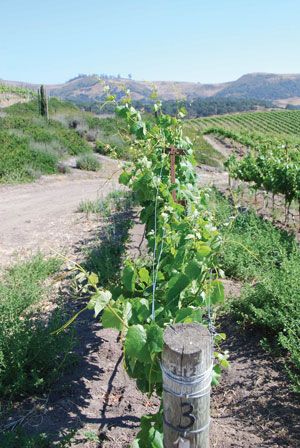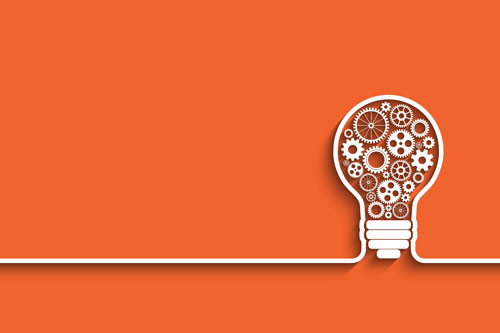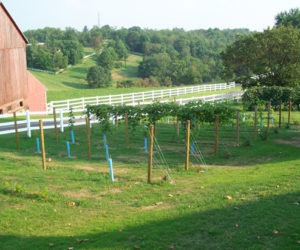 “Grapevine Canopy: The above ground portion of the grapevine formed by the shoot system. It includes shoots (leaves, petioles, shoot stems, shoot tips, lateral shoots and tendrils) and the fruit, trunk and cordon canes. Dense or crowded canopies have excess leaf area and the fruit inside is heavily shaded. Open or low density canopies are not shaded heavily by leaves in the fruiting zone.”
“Grapevine Canopy: The above ground portion of the grapevine formed by the shoot system. It includes shoots (leaves, petioles, shoot stems, shoot tips, lateral shoots and tendrils) and the fruit, trunk and cordon canes. Dense or crowded canopies have excess leaf area and the fruit inside is heavily shaded. Open or low density canopies are not shaded heavily by leaves in the fruiting zone.”
– (Dr. Richard Smart, Sunlight Into Wine)
Canopy management is a subject that every backyard winegrape grower should understand as there is no study that gives a backyard vineyard more potential for improving wine quality than carefully considered manipulation of leaf-layer number, sun and wind exposure on the fruit (in balance), and the ability to increase fruitfulness in subsequent vintages by activating dormant buds to be fruitful.
This article will delve into the work of Dr. Richard Smart, a hero of mine, and will show that understanding and reading Dr. Smart’s book Sunlight Into Wine is homework that is required of any serious student of viticulture.
Dr. Smart’s canopy According to Smart, canopy management is defined as “a range of techniques which alter the position and number of shoots and fruit in space.” In other words, we manipulate the way the vine grows to better position the pruned shoots/spurs, the growing shoots and (by virtue of positioning) give each fruit cluster its own space in the canopy without being overly shaded or nestled with other grape clusters.
The benefits we can expect from proper canopy management are also spelled out by Dr. Smart:
1. Improving wine quality (sun exposure on fruit, niche space for all clusters)
2. Improving winegrape yield (allow a vine to express its vigor with a healthy crop).
3. Reducing incidence of some diseases (specifically mildew and bunch rot due to more wind and sun exposure).
4. Decreasing production costs. (He recommends mechanizing farming to reduce costs, which applies to commercial production, however proper equipment in the small scale vineyard will also improve efficiency.)
5. Pesticide spray effectiveness.
Dr. Smart also succinctly defines how canopy management techniques are applied:
1. Identify problem canopies (e.g. fruit too shaded/vegetal flavor in wine).
2. Decide which canopy management options to use (e.g. leaf plucking and early shoot removal).
3. Successfully implement and document the options, practices, and their measurable results. (Leaf pulling trials and subsequent winemaking trials and tasting for each level of leaf removal.)
Leaf-layer number (LLN)
Simply defined, the leaf layer number is the average amount of leaves on a specific vine, row or vineyard that block the sun from the clusters. A LLN of 2.0 means that there are an average of 2.0 leaves between the outer atmosphere (no vine) and where the fruit is nestled in the canopy. Often LLN is used in a scorecard of canopy management, where a thin stick is inserted randomly into the canopy, and the number of leaves between the open air and the fruiting zone is measured (if a leaf touches the stick it is counted) and made into an average. Using approximately 50 stick insertions (or simple counting), you will likely come up with an average between 1.0–4.0 in most vineyards.
Dr. Smart’s theory is that every vineyard is in balance at an average of 1.0–1.5 leaf layers between the direct sunlight and the fruit. 10% of PAR (photosynthetically active radiation, i.e. direct sunlight) is the minimal amount of sun flecking and exposure necessary to properly ripen the fruit and to reduce vegetal aromas and flavors (pyrazines). Grapevine leaves are amazingly successful in absorbing PAR — a full 94% of PAR is absorbed by a single leaf layer. That means one leaf layer (at fruiting zone) with gaps for flecking the fruit is necessary in all vineyards for optimal fruit and wine quality.
Does LLN change in different climates? Sure! In the coolest of coastal climates (like mine in the Santa Rita Hills of California), we can crank our leaf layer down to 0.25–0.5, with much of the fruit 100% exposed. But we take precautions to make sure the fruit does not burn in case of a heat spell. We leave a “sombrero” leaf above each cluster to protect against the strongest and hottest 11 am to 2 pm sunlight. We also pull leaves aggressively (0.25–0.5 LLN) leaves on the east side of the north-south-oriented rows, as the morning sun is cooler and safer than the potentially hot afternoon sun on the west side. These are site specific practices offered for an example.
How about in an area that gets hot regularly, should a grower leave more than 1.5 leaf layers between the sun and fruit? Not really. If the leafing is done right after flowering (optimal), the clusters will produce skins that resist burning. Pulling leaves in summer, in the midst of a heat spell, is not a good idea — think of your grapes like a human being that wants a suntan. Building a “base” of sun exposure is required so the skin does not burn when suddenly exposed. Timing is key, and even in the hottest areas 1.5 LLN should be enough protection for the fruit, and provide enough openness to promote good flavor and reduce disease.
Basically, what I want you to know is that 10% of ambient PAR is necessary to remove vegetal flavors from winegrapes, and each LL reduces PAR penetration by 94%. Pull leaves right after flowering/set to 1.0-1.5 LLN, and then fine tune over the years to the lowest LLN possible without sunburn on the fruit.
Sun and wind exposure on fruit in canopy
The idea here is to artificially produce an environment in the fruit zone of every vine that gives the fruit a perfect home in which to grow, ripen, develop flavor and to resist disease and pests. The perfect balance is a vine that is bathed and flecked in sunlight and has no increase in humidity because there is proper airflow in the fruiting zone. Every vine is a bit different and needs to be looked at by the vineyard laborer as an independent entity. Some vines need a few more or less leaves plucked, a few more or less shoots removed to give the proper balance and ratio of leaves to clusters. The enemies of proper canopy management are:
1. Shade (poor fruit quality)
2. Humidity (increased rot/mildew pressure)
3. Stagnant airflow (increased disease pressure, high LLN reduces air flow by 90%)
All three of those issues can be solved with proper canopy management. Well placed positions from pruning give each shoot room to grow and thrive. Spring shoot removal, lateral shoot removal and leaf plucking can open up the canopy to sun flecking and allows wind to move through the fruiting zone. And an open canopy allows the escape of humidity/water vapor given off by respiring leaves.
Avoid shaded fruit
Shaded fruit is the greatest enemy of wine quality, and has been proven to cause:
• Lower sugar levels at harvest
• Decreased phenols and anthocyanin
• Decrease in tartaric acid
• Lower monoterpene compounds (floral, high toned)
• Less varietal or fruit character on the nose and palate
• Higher juice and wine potassium and elevated pH
• Increased malic acid
• Increased herbaceous, grassy, veggie aromas and flavors
• Increased incidence of disease, pests, mildew, and specifically botrytis bunch rot.
Promoting sun exposure and wind movement
1. Leaf pluck to 1.0–1.5 LLN as close to the end of flowering as possible.
2. Open up the canopy on the windward side of the vineyard, if there is a common wind direction.
3. Be wary of sunburn (too much leafing) and overt shading (too little plucking/shoot removal). Moderation is key.
4. Within four to five years of really paying attention to leafing and shoot removal you will gain a kinesthetic understanding of your vineyard. You will be able to feel what the vines need, and will know intuitively how varying practices and vintages have impacted your wine’s style and quality.
When is too much wind a bad thing? Wind in the Santa Rita Hills where we are has a bad reputation, as it causes a poor flowering/fertilization about one of three years. If we pulled leaves before flowering, we would be exposing the pre-flower clusters to even more wind during flowering, which can strip the pollen and desiccate the delicate cluster.
Leaves are not the enemy! You still need 12–15 leaves per cluster for proper ripeness, and those leaves are the engine for producing growth and sugar, can protect the fruit from sunburn, and can also protect flowers from wind gusts that can strip them.
The take home message here is that shaded fruit produces thin, green wines. Stagnant airflow in the fruiting zone causes rot and mildew, and also will provide habitat for insect, mammal and bird pests. Proper canopy management produces a microclimate (measured in each vine’s fruit zone) that allows at least 10% of PAR to fleck the fruit, and allows enough airflow that humidity does not exceed ambient levels.
Improving fruit-bud activation
The grapevine has a confounding ability to adjust its growth patterns and fruitfulness at any given moment. Shoots in shade will grow with longer, thinner shoots to try to climb higher and find sunlight. At any given time, a vine can produce (from any given node) a leaf, a leaf and a tendril, or a leaf and a cluster/second crop cluster. So the vine adapts every time a new node is grown on every single shoot.
Because a vine does not want to waste its resources, it will not produce fruit in a position that receives minimal sunlight. For a dormant bud to become activated and produce fruit the next year, it must receive sunlight in spring as the shoot grows. This is an integral part of canopy management that is often overlooked. Not only does sunlight penetration in the canopy impact this year’s crop, it also dictates the fruitfulness of next year’s crop.
here are two considerations that come to mind in this context:
1. Make sure the vine has ample opportunity to bathe each of its growing shoots in sunlight to promote fruitfulness for next year.
2. When making pruning decisions (especially in cane pruned systems), consider which canes (or spurs) received the most sunlight during the previous year. This is not an easy skill to learn, and does require a bit of imagination—recreating in our heads (pruning shears waiting) how the vine looked as it grew, and where the sun was likely to be absorbed during the spring and summer.
The proper 1.0 – 1.5 LLN will likely give the dormant buds all the sunlight they need to go through the process of cluster primordia initiation and development, which is when the fruit-bud differentiates due to sunlight exposure, and becomes fruitful for the next year. In other words, if you pay attention to your canopy management, you shouldn’t have problems with shoots devoid of fruit.
Canopy management could really be renamed “solar management,” as it seems 90% of all canopy building concerns itself with where sun does and doesn’t impact the vine and how sunlight and the quality of the sunlight influences wine quality and fruitfulness in subsequent vintages.







